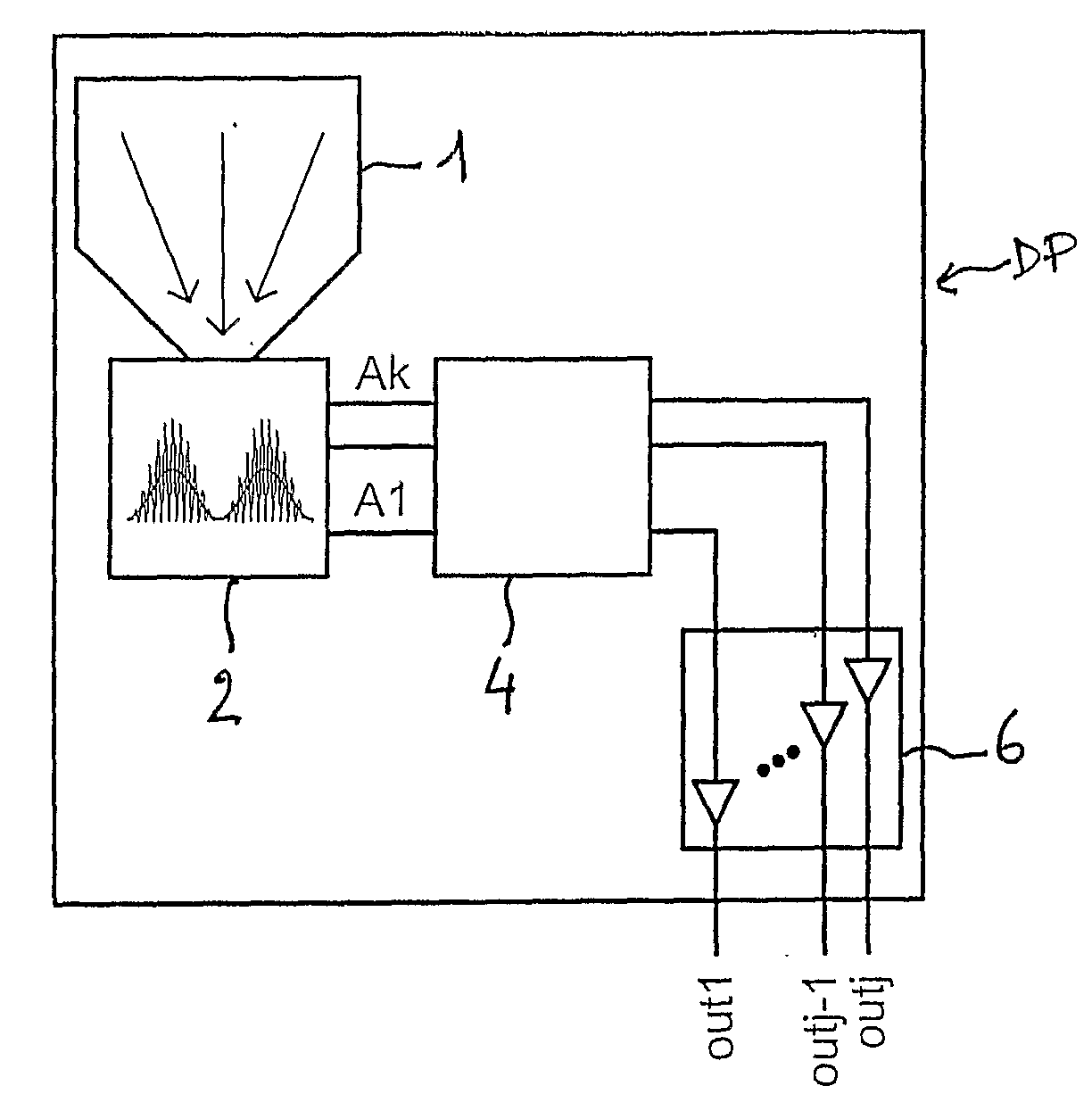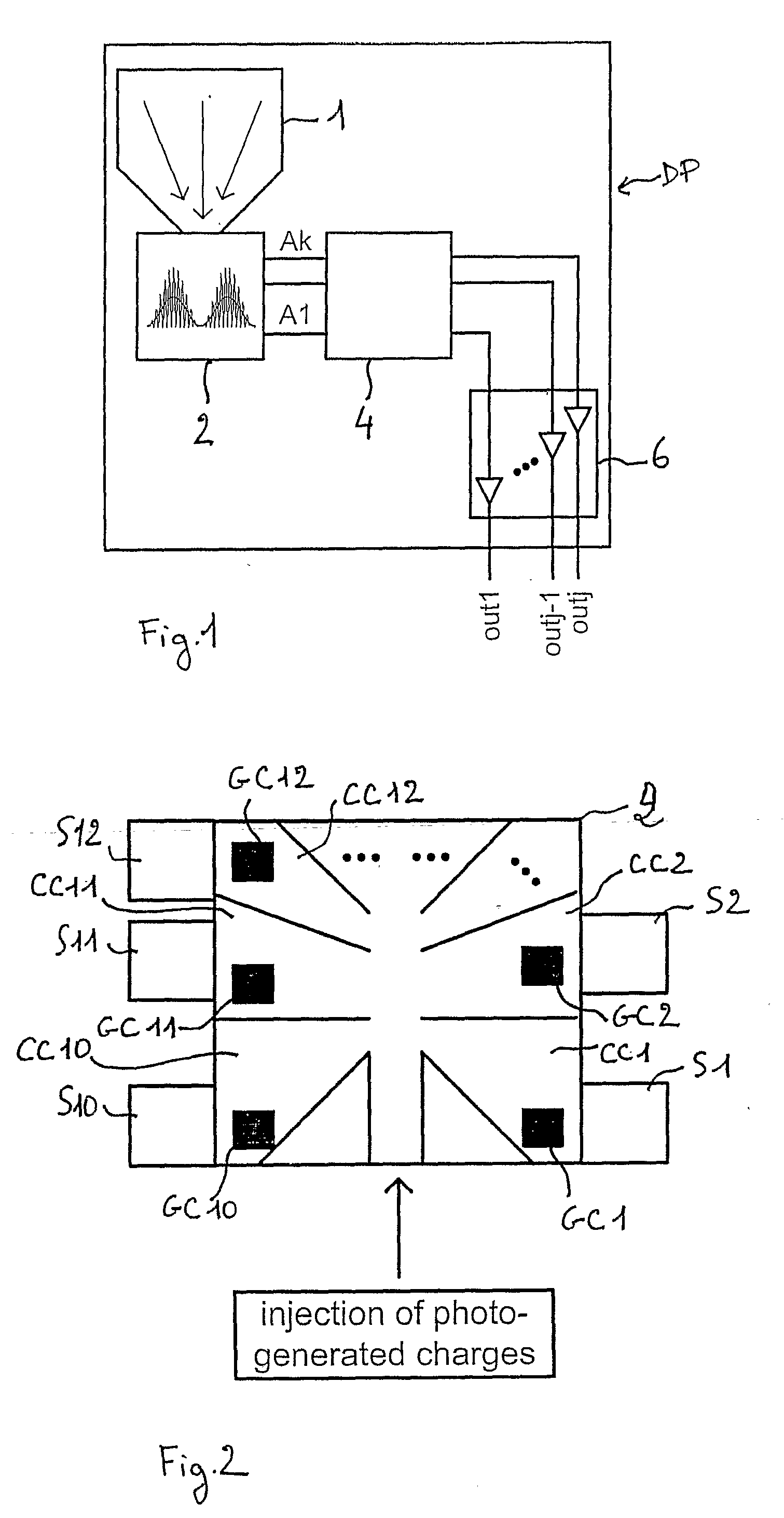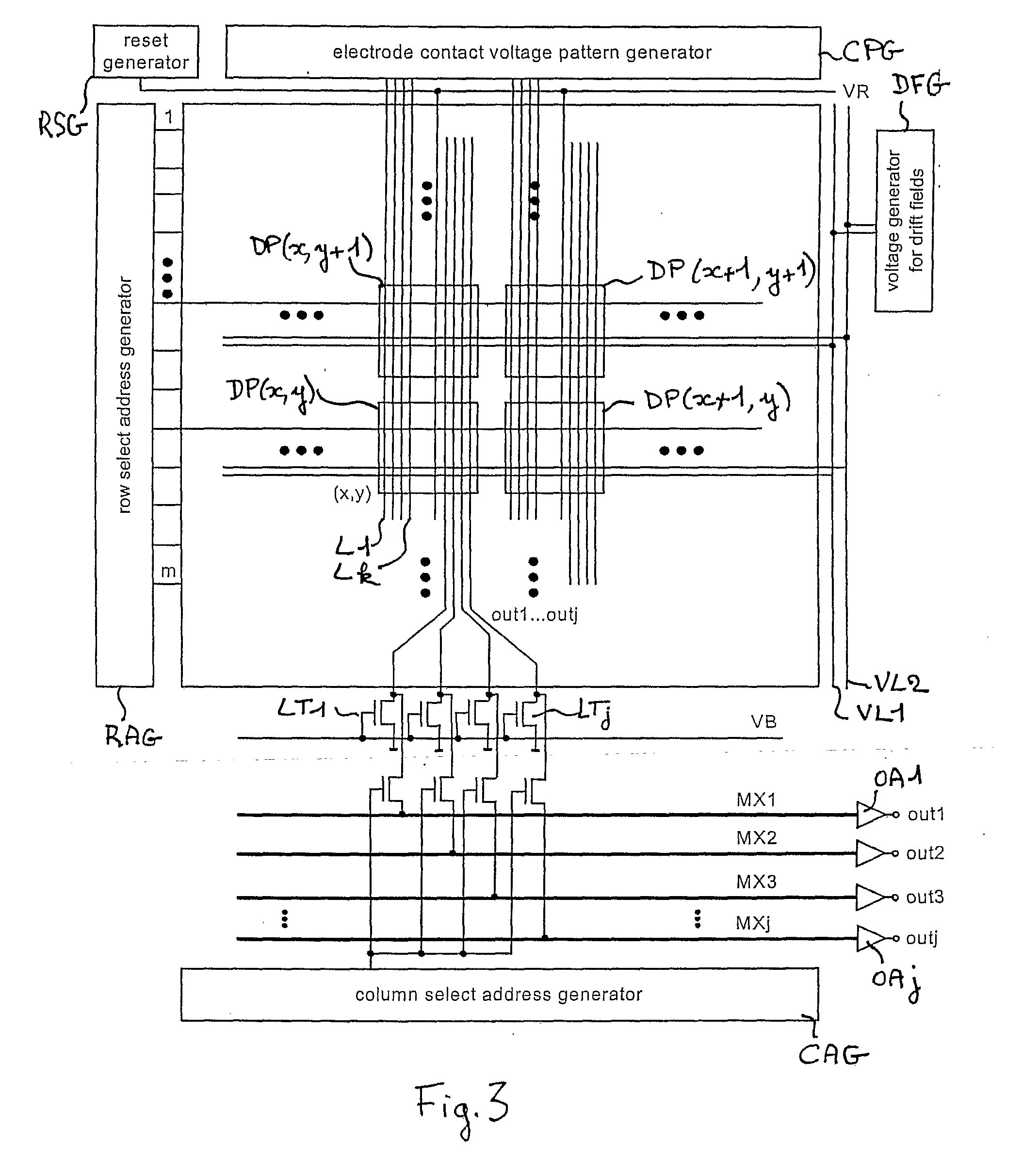Device and Method for the Demodulation Electromagnetic Wave Fields
a technology of electromagnetic wave field and demodulation device, which is applied in the direction of instruments, television systems, and reradiation, to achieve the effects of less susceptibility, less susceptibility, and improved spatial (lateral) sampling of the scen
- Summary
- Abstract
- Description
- Claims
- Application Information
AI Technical Summary
Benefits of technology
Problems solved by technology
Method used
Image
Examples
Embodiment Construction
[0038]FIG. 1 shows a photo-sensitive pixel according to the invention. This photo-sensitive pixel DP comprises a photo-sensitive detection region 1, a demodulation region 2, an optional stage 4 for any kind of data processing and optionally amplification circuitry 6. On reception of electromagnetic radiation, e.g. light radiation, on the photo-sensitive area of the detection region 1 and potentially of the demodulation region 2, photo charge carriers are generated.
[0039]The detection region 1, in particular if largely designed, needs to transport the photo-generated charge carriers to the demodulation region 2 as fast as possible in order to minimize any low-pass filtering effects on the opto-electronically converted signal, also called electric signal of flowing charges or photo-current signal. The fast charge-carrier transport to the demodulation region 2 is realized by a lateral drift field into the particular direction. That drift field can be generated by various methods. The f...
PUM
| Property | Measurement | Unit |
|---|---|---|
| semiconductor | aaaaa | aaaaa |
| electromagnetic wave field | aaaaa | aaaaa |
| time | aaaaa | aaaaa |
Abstract
Description
Claims
Application Information
 Login to View More
Login to View More - R&D
- Intellectual Property
- Life Sciences
- Materials
- Tech Scout
- Unparalleled Data Quality
- Higher Quality Content
- 60% Fewer Hallucinations
Browse by: Latest US Patents, China's latest patents, Technical Efficacy Thesaurus, Application Domain, Technology Topic, Popular Technical Reports.
© 2025 PatSnap. All rights reserved.Legal|Privacy policy|Modern Slavery Act Transparency Statement|Sitemap|About US| Contact US: help@patsnap.com



